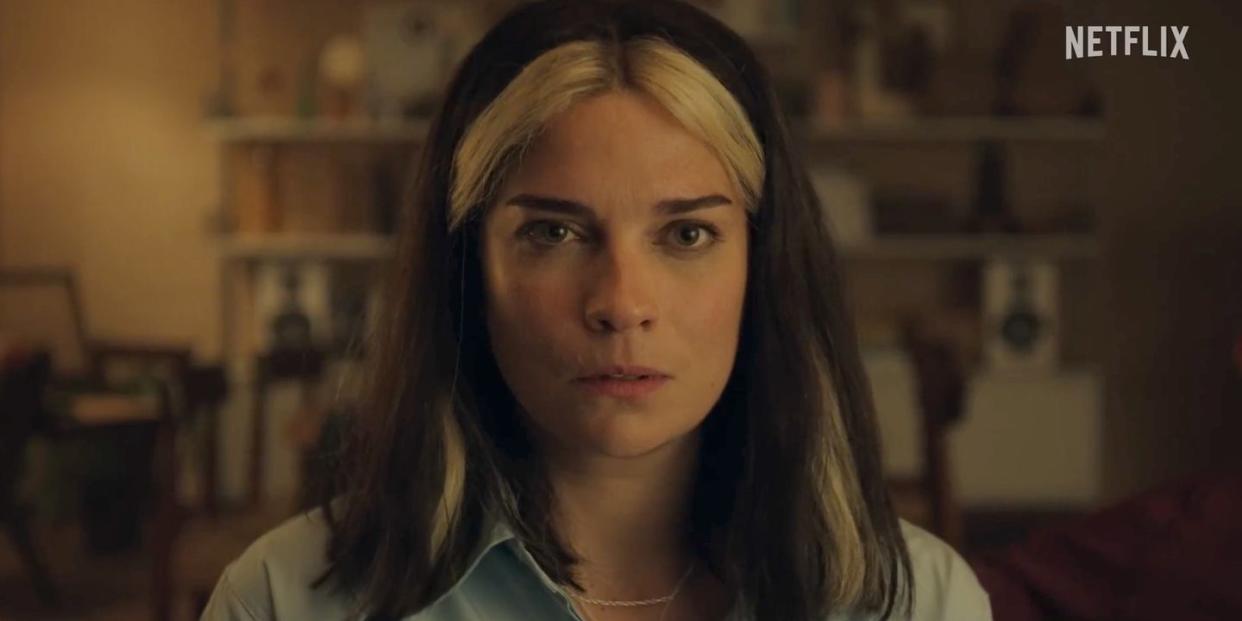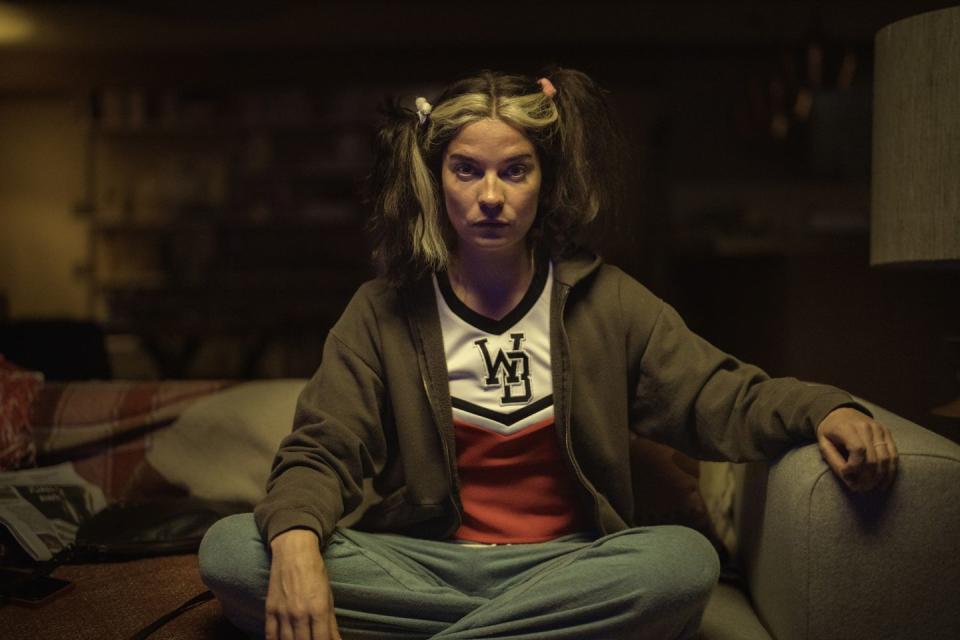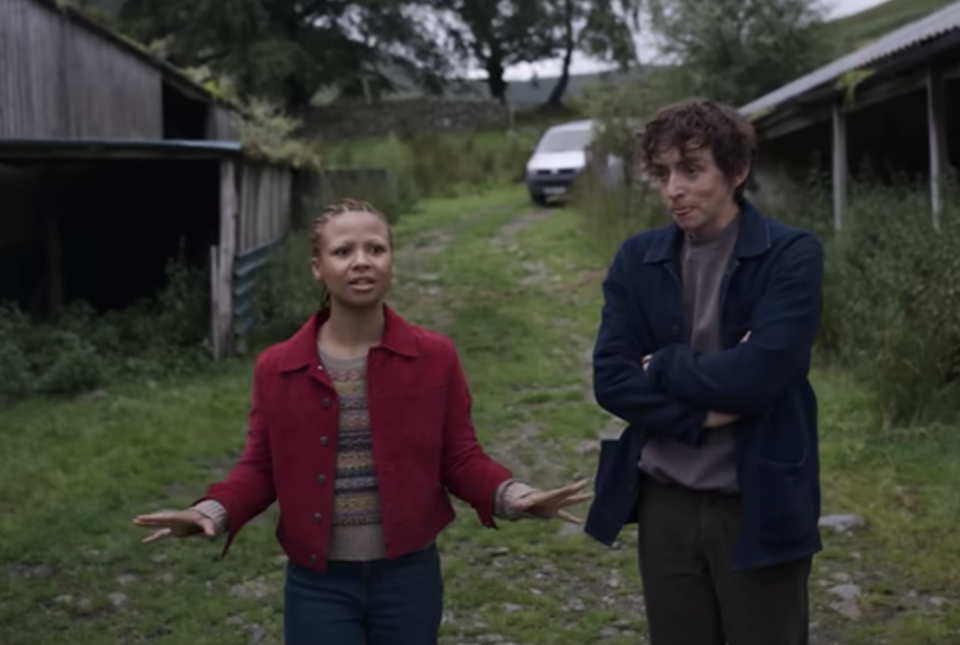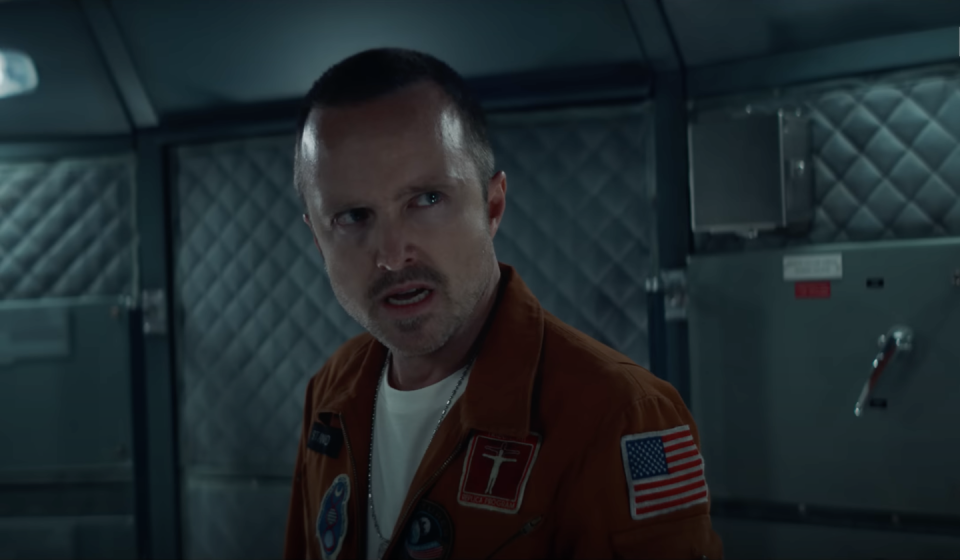We Reviewed Every Episode of 'Black Mirror' Season 6

- Oops!Something went wrong.Please try again later.
"Hearst Magazines and Yahoo may earn commission or revenue on some items through these links."
It’s been a while since we’ve seen a new episode of Black Mirror, the British techno-dystopian series that has proven to be such an accurate predictor of future events that it’s now a shorthand way to describe reality. In the four years since the last season dropped, we’ve experienced a global pandemic that has bound us more tightly to our screens than ever; the attempted overthrow of American Democracy at the hands of an Internet-conspiracy-crazed mob; and an A.I. revolution that is–at least in part–responsible for the ongoing Hollywood writers’ strike. It’s all just so Black Mirror.
It seems like every day summons another Black Mirror prophecy. In April, the New York City Police Department announced the return of“controversial,‘Black Mirror’ robot dogs,” according to one headline (See: “Metalhead,” Season Four). Tech startups are resurrecting the dead with A.I. chatbots, (See: “Be Right Back,” Season Two). Just a couple of weeks ago, Apple released the Vision Pro mixed-reality headset that boasts the ability to “relive cherished moments” in 3D, (See: “Entire History of You,” Season One). Upon seeing Apple’s new device, the show’s co-creator Charlie Brooker thought the same thing as the rest of us:“Oh my God, that’s so Black Mirror.” Of course he did. Because it was.
Into this uncanny valley, Netflix dropped Season Six this Thursday, containing a fresh bounty of five episodes. But if real life and Black Mirror have reached some kind of bizarre convergence point, what is left for the show to say about our future? Not much, it turns out. Most of the episodes of Season Six are set in the past, making this the most un-Black Mirror season of Black Mirror yet.
That’s not to say it’s not worth watching. The best thing about Black Mirror, the enduring quality that’s made it such a phenomenon, is its pure ambition. Much like The Twilight Zone, the show to which it is most often compared, each episode is a self-contained unit adhering to its own internal logic. This requires massive amounts of exposition and expensive production design in a time of shrinking attention spans and budgets. There are no recurring characters for us to get attached to, no ongoing stories to follow. With its often grim view of humanity, this is not relaxing television; Netflix has Emily in Paris for that. Yet, time and time again, Black Mirror seduces us with its slick version of a counterfactual reality, with its ability to make us think. But now that our reality has caught up with Black Mirror, it feels like the show has less to say about the unintended future consequences of technological advancements than it has to say about what’s happening right now, quite literally.

"Joan Is Awful"
That’s true of “Joan Is Awful,” the most classically Black Mirror episode in the new batch, which depicts a world in which TV production has accelerated to the point where a new installment of a show can be–with the help of A.I.–written, shot, edited and released on a streaming service within the span of a single day.
Annie Murphy (Schitt’s Creek) plays Joan, a middle manager at a Spotify-esque tech company, struggling with the feeling that she’s “not the main character in my own life story,” as she tells her therapist. After a rough day at work, she sits down with her fiancé to watch something on an extremely Netflix-like service called “Streamberry.” The fiancé rejects a show called Loch Henry–not incidentally, the title of the next Black Mirror episode–on the grounds that he’s had enough true crime, but then discovers something that catches his eye: a strange new offering called Joan Is Awful, featuring a thumbnail image of a woman with a hairstyle that looks suspiciously like Joan’s. What happens next takes Nora Ephron’s idea that “everything is copy” to an extreme, as we watch Joan watching a fiery onscreen version of herself, played by Salma Hayek, reenacting her entire day, including the part where she exchanged flirtatious texts with her ex-boyfriend. Suffice it to say, neither Joan nor her fiancé was amused.
Joan consults with a lawyer to figure out how to make this all stop, only to be informed that, unfortunately, she gave Streamberry permission to mine her data when she subscribed to the service. (Who among us hasn’t checked a box without reading the fine print?) Now the company is free to use Joan’s digital footprint to generate scripts for new programs starring CGI projections of famous actors–because, of course, that’s not really Salma Hayek playing Joan, just a licensed version of her image. (In a hilarious matryoshka-doll-like twist, we see CGI Salma as Joan discovering Joan Is Awful on Streamberry, starring the CGI version of another Academy Award winning actress. I won’t say who.)
My first reaction to “Joan Is Awful” was that it was almost too navel-gazey, like two computer screens facing each other with their cameras on, a digital house of (black) mirrors. But as real-life screenwriters picket outside studios, demanding fair pay and protesting the shortening of the TV production cycle, as Netflix has effectively swallowed traditional linear television, it felt like an appropriate cautionary tale, not to mention an example of the show’s creators bravely–albeit gently–biting the hand that feeds them. ( “If we weren’t showing the series on Netflix, we would be being sued by Netflix,” Brooker says in the show’s promotional materials provided to journalists by Netflix.)
“Joan Is Awful,” was also notable for being the only episode this season that didn’t involve extreme violence. I won’t reveal how it ends, but it was hilarious and mind-bending in the best possible way, with a mild dose of optimism that the other episodes lacked. It was another reminder that the show’s creators, Charlie Brooker and Annabel Jones, can be relied upon to take big swings and fully commit to the gag.
As a result, some episodes inevitably work better than others.

"Loch Henry"
While “Joan Is Awful” explores what happens when a person’s life is broadcast almost instantaneously and without explicit permission, the second episode in the series, “Loch Henry,” examines the perils of exploiting one’s own trauma by choice to feed the content machine. (Yes, the fictitious Streamberry service also makes a cameo here.)
The premise is simple enough: a geeky film school student named Davis (Samuel Blenkin) visits his creepy but beautiful hometown in Scotland with his girlfriend/classmate, Pia (Myha’la Herrold). The two are collaborating on a sweet environmental documentary about a man in the area who protects endangered eggs, until a local bartender tells Pia about a series of gruesome murders that roiled the now-abandoned town back in 1997 before the coverage got lost amid the news of Princess Diana’s death. Enchanted by the true crime story, and its market potential, Pia persuades Davis to shift gears, abandon the uplifting but dull egg project, and make a documentary about the murders instead, despite the fact that the murderer was indirectly responsible for the death of Davis’s father. Davis is conflicted, but ultimately relents.
I won’t say what happens next, as the joy of a Black Mirror episode–if you can call it joy– lies in the unexpected twists and turns. But viewed as a critique of the exploitative nature of true crime, “Loch Henry” seemed to be guilty of the exact thing it was taking aim at: torture porn. Maybe that was the point. But the ending felt sad and empty, and not just because Davis had sacrificed everything he cared about at the altar of Streamberry.

"Beyond the Sea"
Set in the 1960s amid the space race, “Beyond the Sea” had a cinematic, Kubrick-y vibe. The episode, which was 80 minutes long and directed by John Crowley–known for the Oscar-nominated movie Brooklyn–is essentially a feature film about toxic masculinity both on earth and in orbit. Despite being set in the past, the plot depended on a very Black Mirror-y type of technology that allows two astronauts, Cliff and David, played by Aaron Paul and Josh Hartnett, respectively, to beam their consciousness back to earth so they can live out their bucolic middle-class American family lives, thanks to a replica version of their bodies.
After David’s replica is destroyed–I won’t reveal how–and he can no longer visit earth, he falls into a deep depression that endangers the entire space mission. Back on earth, Cliff’s wife (Kate Mara) suggests that he extend David an invitation to use his link, so that Cliff’s colleague can experience life on earth, and perhaps emerge from his funk. The delight of the episode, in addition to its beautiful cinematography, stems from the emotional performance of Aaron Paul–who we knew and loved as Jesse Pinkman in Breaking Bad–as Cliff, a brooding silent type, and then as David, an artistic bon vivant experiencing the longing for social connection inside of Cliff’s body.

"Mazey Day"
The last two episodes of Black Mirror marked the biggest departure from the historic themes of the show, as they were both set in the past and didn’t involve any new technology at all. “Mazey Day,” the penultimate installment, was one of the weirdest, most atypical Black Mirror episodes I have ever seen, but its ending was so surprising and clever that it worked. At 40 minutes, it was also the shortest.
Set in the aughts–the iPod Mini has a nice little cameo– “Mazey Day”centers on an ethically conflicted but financially strapped paparazza named Bo (Zazie Beetz) who finds that to pay the rent she must, however reluctantly, continue stalking her prey: an A-list actress named Mazey Day (Clara Ruggard), who mysteriously vanished from a movie set following a hit-and-run accident. Lured by the prospect of a $30,000 payout for a photo, Bo works her sources, but when she finds where Mazey is hiding, things take a shocking turn. While the message is trite–yes, we know celebrities are people too and deserve their privacy–the 180-degree genre turn and the double entendre at the end makes it all worthwhile. The less said the better.

"Demon 79"
The season’s final episode opens with a title sequence that says “Black Mirror Presents: A Red Mirror Film,” indicating from the start that “Demon 79” is going to probably fall into the horror genre, which it does. Here we watch as our protagonist, Nida (Anjana Vasan), a shy South Asian employee at a department store in Northern England, is forced to eat her biryani in the basement after a racist colleague complains that it is too smelly. As she seethes with repressed rage, Nida cuts her finger, which unleashes a charming demon named Gaap (Paapa Essiedu), clad in a fluffy fur coat that’s as fierce as his demands: Nida must kill three people in three days or the entire world will be destroyed.
Although “Demon 79” was intentionally a shift from the classic Black Mirror style–it was co-written by Bisha K. Ali, showrunner for Ms. Marvel–there were elements of the story that reminded me of the series pilot, with a supernatural twist. “The National Anthem,” which debuted in 2011, focused on a British politician who is blackmailed into performing a sexual act with a pig in order to save the life of a kidnapped princess. Here, the stakes are arguably higher–saving the lives of everyone on earth–and the context weirder, yet we’re also anxiously following someone compelled by external forces to commit atrocities in service of the greater good, with a dreadful deadline hovering in the background. Despite the genre shift, the episode’s final shot, set to the tune of Art Garfunkel’s “Bright Eyes,” was as authentically Black Mirror as it gets.
You Might Also Like

